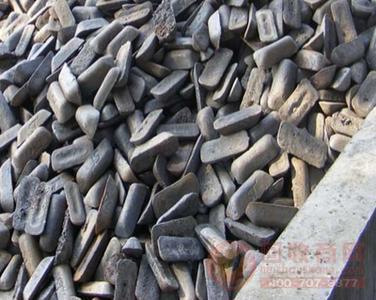What is cast iron? Analysis of major types

A general term for an alloy of iron, carbon and silicon. In these alloys, the carbon content exceeds the amount retained in the austenite solid solution at the eutectic temperature.
An iron-carbon alloy containing more than 2% carbon. Industrial cast iron generally has a carbon content of 2% to 4%. Carbon is mostly in the form of graphite in cast iron, and sometimes in the form of cementite. In addition to carbon, cast iron also contains 1% to 3% of silicon, as well as manganese, phosphorus, sulfur and other elements. Alloy cast iron also contains elements such as nickel, chromium, molybdenum, aluminum, copper, boron, and vanadium. Carbon and silicon are the main elements that affect the microstructure and properties of cast iron. Cast iron can be divided into:
1 gray cast iron. The carbon content is high (2.7%~4.0%), the carbon is mainly in the form of flake graphite, and the fracture is gray, which is called gray iron. Low melting point (1145 ~ 1250 ° C), small shrinkage during solidification, compressive strength and hardness close to carbon steel, good shock absorption. Since the flake graphite exists, the wear resistance is good. Casting performance and cutting processing are better. It is used to manufacture structural parts such as machine bed, cylinder and box. Its brand number is followed by two sets of numbers under "HT". For example: HT20-40 (the first number indicates the lowest tensile strength and the second number indicates the minimum bending strength).
2 white cast iron. Carbon and silicon content are low, carbon is mainly in the form of cementite, and the fracture is silvery white. When the solidification shrinks, it is easy to produce shrinkage cavities and cracks. High hardness, brittleness, and can not withstand impact loads. Used as a blank for malleable cast iron and as a wear-resistant part.
3 malleable cast iron. Obtained by annealing the white cast iron, the graphite is distributed in a flocculent shape, referred to as tough iron. It has uniform texture, wear resistance and good plasticity and toughness. Used to make parts that are complex in shape and can withstand strong dynamic loads.
4 ductile iron. The gray iron of cast iron is obtained by spheroidizing treatment, and the precipitated graphite is spherical, which is referred to as ductile iron. All or most of the carbon is present in the free state of spheroidal graphite, and the fracture is silvery gray. It has higher strength, better toughness and plasticity than ordinary gray cast iron. Its grade is indicated by two sets of numbers after "QT", for example: QT45-5 (the first set of numbers indicates the lowest tensile strength and the second set of numbers indicates the lowest elongation). Used in the manufacture of internal combustion engines, auto parts and agricultural machinery.
5 vermicular graphite cast iron. The gray iron of the cast iron is obtained by the creeping treatment, and the precipitated graphite is in the form of a worm. The mechanical properties are similar to those of ductile iron, and the casting properties are between gray cast iron and nodular cast iron. Used to make parts for automobiles.
6 alloy cast iron parts. Ordinary cast iron is obtained by adding an appropriate amount of alloying elements (such as silicon, manganese, phosphorus, nickel, chromium, molybdenum, copper, aluminum, boron, vanadium, tin, etc.). The alloying elements change the matrix structure of the cast iron to have corresponding properties such as heat resistance, wear resistance, corrosion resistance, low temperature resistance or no magnetism. Used to manufacture parts for mines, chemical machinery, instruments, meters, etc.
Regulating Flow Sphere,L Type Sphere Ball,Electric Control Ball Valve,Change The Way Ball Valve
Antong Valve Co.,Ltd , https://www.atvalveball.com